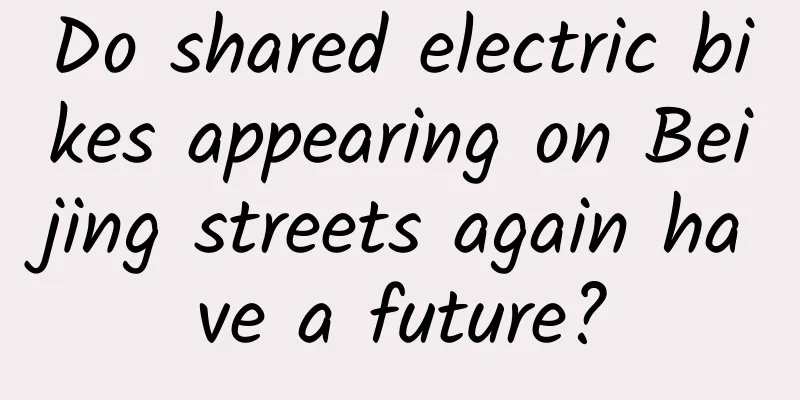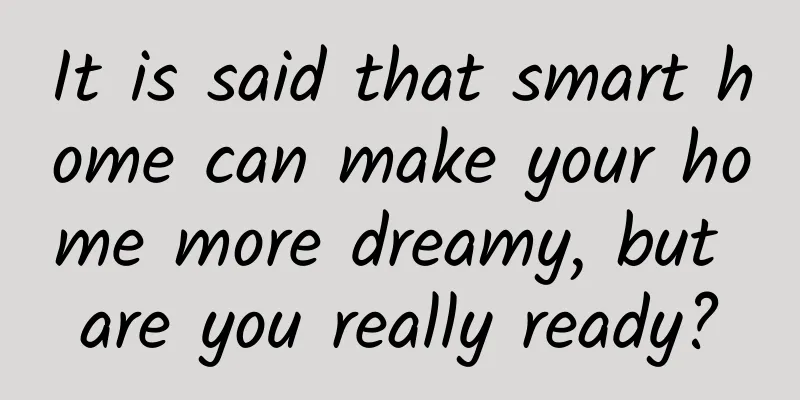Can eye protection lamps prevent myopia?

|
"Doctor, is the eye protection lamp useful? Which brand is better to buy?" I believe many parents have asked the doctor this question during the ophthalmology clinic. There are currently two extreme views on whether the eye protection lamp is useful. Some manufacturers will over-exaggerate the effect of eye protection lamps, and promote that as long as a certain brand of eye protection lamp is used, it can play a very good role in myopia prevention and control. Some businesses even compare the myopia prevention and control effect of eye protection lamps with OK glasses (orthokeratology lenses) and frame glasses. On the other hand, some ophthalmologists have devalued eye protection lamps, saying that "all eye protection lamps on the market are IQ taxes and have no effect. If you have the time and energy to choose an eye protection lamp for your child, you might as well take your child to outdoor activities." In fact, we need to look at the different statements about eye protection lamps dialectically. Is it necessary to buy an eye protection lamp? The most effective light for myopia prevention and control is sunlight. Outdoor light can promote the release of dopamine in the brain, and dopamine can effectively inhibit myopia and achieve the purpose of preventing myopia. It can be said that the sun is currently the only "eye protection lamp" that has been proven to effectively prevent and control myopia. Since sunlight is composed of ultraviolet light (UVR, wavelength below 400nm), visible light (VIS, wavelength 380~760nm) and infrared light (IR, wavelength above 760nm), there is currently no artificial lamp on the market that can simulate the effect of sunlight alone. However, with the progress of the times, human living habits have long been different from our ancestors' "work at sunrise and rest at sunset". Most children still have to do close-up eye activities such as reading and writing after the sun sets. At this time, in the absence of sunlight, the selection and use of artificial light is particularly important. Therefore, in the absence of sufficient sunlight, choosing the right eye protection lamp can indeed delay the impact of long-term close-up eye use on the progression of myopia. Therefore, eye protection lamps are still needed. How to choose an eye protection lamp? There are many professional terms in the promotion of eye protection lamps, which makes many parents at a loss when choosing. You can refer to the following indicators: ● Illuminance A large number of clinical experimental studies have shown that the brighter the surrounding environment, the slower the growth rate of the eye axis. Professor Yang Zhikuan of the Optometry Group of the Chinese Medical Association reminds: "When children read and study at home, the light value entering the eyes should not be less than 125 lux (illumination unit, hereinafter referred to as lux), which is also an important factor that cannot be ignored when preventing children from myopia." According to the "Lighting and Lighting Hygiene Standards for Primary and Secondary School Classrooms of the People's Republic of China" jointly issued by the Ministry of Health and the Standardization Administration, the surface illumination of classroom desks should not be less than 300 lux, and the illumination of classroom blackboards should not be less than 500 lux. The international lighting specification CIES008/E-2001 requires an illumination of 500 lux for office environments, school environments, and library reading environments. In addition, illumination uniformity is also one of the criteria for judging the quality of eye protection lamps. Illumination uniformity refers to the ratio of the minimum illumination to the average illumination on a specified surface. The closer the illumination uniformity is to 1, the more uniform the light distribution is, and the more comfortable the eyes will be when using it. The illuminance marked in the introduction of many eye protection lamp products is measured from the edge of the light source, but we don’t know the actual illuminance entering the eye and the uniformity of the light. So how should we choose? Here are two simple methods: Method 1: Check whether the parameters of the eye protection lamp meet the national AA-level illumination standard. Generally, desk lamps that meet this illumination standard are relatively up to standard in terms of both illumination and illumination uniformity. Method 2: Buy a light meter and then go to a physical store to test it. This method is relatively more intuitive and reassuring. During the test, we put the light meter near the eyes. If the light meter still shows a light intensity of more than 300 lux, it proves that the lighting environment is suitable for long-term reading. ●Color temperature When we heat an object, the object will show different colors as the temperature changes. For example, when heating an iron block, the iron block first turns red, then yellow, and finally turns white. The temperature corresponding to the color of the object at this time is the color temperature, so color temperature is strictly speaking a temperature measurement method. Therefore, what we traditionally think of as "warm colors" such as red and yellow are actually low color temperatures, while "cold colors" such as blue and white actually have higher color temperatures. What color temperature is the best for eye protection lamps? Here we need to look at the problem from multiple angles. A large number of animal experiments in the past have found that long-wavelength light such as red and yellow is more likely to cause eye axis growth than short-wavelength light such as blue and purple. So from the perspective of delaying myopia, high color temperature light may theoretically be more suitable than low color temperature light. However, if the color temperature is too high, the light will appear whiter or even bluer, and some people will feel glare and discomfort after long-term exposure to such light. Therefore, many experts and scholars regard the light intensity of about 4000K (Kelvin temperature) (similar to the light at sunrise) as the most suitable color temperature for human reading. It should be noted that the 4000K (Kelvin temperature) color temperature here is only a comprehensive recommendation based on "myopia prevention and control", "brightness" and "comfort", so individual differences are still allowed. If someone does not feel uncomfortable reading and writing at a 5000K color temperature, there is no need to deliberately lower the color temperature. The "National Standard of the People's Republic of China - Performance Requirements for Reading and Writing Desk Lamps" only recommends choosing light with a color temperature below 4000K (Kelvin temperature) at night. ●Blue light In fact, blue light has little to do with myopia. The real harm of blue light is that long-term exposure will cause certain chronic damage to the retina. International standards divide retinal blue light hazards into four levels: no risk, low risk, medium risk and high risk. Because the lens of minors is more transparent, it will be more permeable to blue light. Therefore, when we choose eye protection lamps, it is best to choose products without blue light hazards. ●Visible flicker Many eye protection lamps now use the gimmick of "no flicker", but this is actually a concept that replaces the original with the new. Flicker refers to the fluctuation of the luminous flux of an electric light source at a certain frequency. Theoretically, all lamps will have flicker. When the flicker frequency is very low, our eyes will notice the flicker of the light, and long-term exposure to such lights will increase eye fatigue. When the flicker frequency is higher than a certain frequency, the human eye will not react at all. Therefore, when we buy eye protection lamps, we are not pursuing "no flicker" but "no visible flicker". Here is the simplest detection method, which is to take out your mobile phone, turn on the camera, and point it at the light to see if there is any fluctuation. ●Color rendering index The color rendering index (Ra) refers to a measure of the consistency between the color of an object and the color of the object itself. Simply put, external light will have a certain impact on our ability to distinguish the color of an object. The color of an object we see under a high color rendering index light is closer to the object's true color. Light with a low color rendering index will not only increase the difficulty of color discrimination, but also increase visual fatigue. The color rendering index is divided into: Ra50 or less is "poor", Ra50-70 is "average", Ra70-80 is "good", and Ra80 or above is "excellent". Therefore, when choosing an eye protection lamp, you should choose a product with a high color rendering index. Generally, the color rendering index should be above 90. ● Auxiliary functions Many eye protection lamps on the market currently have many auxiliary functions, such as: voice control, intelligent illumination adjustment, and various gear switching. These functions are just "icing on the cake". In fact, what is more important is to look at the "mobility" of the eye protection lamp. Choose an eye protection lamp with a lamp head and lamp pole that can be adjusted up and down, left and right at will. In this way, the position of the light can be adjusted at any time according to the child's posture, height, and indoor lighting, so that the child has the most sufficient and balanced lighting when reading and writing. In addition, it is best to place the desk lamp in the front left, so that when holding a pen to write, no shadow will be formed on the paper. The height of the eye protection lamp should not be too low from the desktop, generally 40 to 60 cm is relatively good. Eye protection lamps alone are not enough to protect eyesight. Compared with traditional desk lamps, eye protection lamps can relatively relieve eye fatigue caused by long-term close-range reading and writing, and relieve myopia. However, it still cannot replace myopia prevention and control methods such as outdoor activities, OK glasses, low-concentration atropine, frame glasses, etc. Therefore, you must not think that you can relax the management of other eye habits after buying an eye protection lamp. ● Actively participate in outdoor activities and strictly control the time children spend playing with mobile phones, tablets and other electronic products. ● Follow the “20, 20, 20” eye protection mantra, that is, look at something close for 20 minutes, and then look at something 20 feet (6 meters) away for more than 20 seconds. This will relax the eye muscles and relieve visual fatigue. ● The sitting posture when writing should follow the principle of "one fist, one inch, one foot". Keep your upper body upright and slightly lean forward, and keep your chest one fist away from the table. When holding a pen, your hand should be held one inch away from the tip of the pen. Keep your head straight and lean forward naturally, with your eyes about one foot away from the table. Put your feet flat and let your shoulders droop naturally. This will protect your eyesight and also put your body in a comfortable state for learning. ● When children are reading or writing, do not turn on only one eye protection lamp. The main lights at home must be turned on at the same time to form a sufficient and uniform lighting environment, which can effectively relieve eye fatigue caused by close-up use of the eyes. |
<<: Those foods you think are junk can actually be eaten boldly!
>>: National Memorial Day丨We will never forget the grief of our country!
Recommend
Zhan Falcon "Easily defeat procrastination and take back the initiative in life"
Course Catalog: Pilot Course - Course and Teacher...
What are the services provided by PPT production companies?
In our daily work, we need to use various types o...
How to achieve the effect of user operation through points operation?
When it comes to the Internet industry, many peop...
iOS 14.5 hits hard, foreign media: Alibaba is worried about Apple's new privacy policy
[[397036]] According to foreign media The Informa...
Chinese technology is hidden under the turf of the Qatar World Cup
"How does it feel to kick?" On the even...
Will people who rely on coffee to "extend their lives" be healthier?
Coffee is a daily drink in modern people's li...
How to build an online operation and promotion system?
How to build a comprehensive online operation and...
In order to deal with fires in space, how do humans respond?
The control and use of fire is a great event for ...
The most comprehensive in history: 37 ultimate promotion and operation methods for domestic apps
In a word, there is no more comprehensive summary...
"Pre-prepared meals enter campuses" has become a hot search! How harmful is it to the body to eat pre-prepared meals frequently?
You happily go out to eat, but the restaurant pro...
What are the functions of the garbage recycling mini program and how much does the garbage recycling mini program cost?
Since 2019, many cities in China have started to c...
Tesla's logic and troubles in moving eastward: There are still three major problems to be solved in building a factory
The rumor was eventually debunked in the clarific...
How to pay social security during the epidemic? How do units and individuals pay respectively?
The social security exemption policy was introduc...
Seven Tips to Increase App Revenue (Part 1)
Mobile marketing is a fluid ecosystem. If CPs wan...
If Darwin were alive today, he would rethink "The Origin of Species"
Anyone who has seen the movie "Prometheus&qu...









